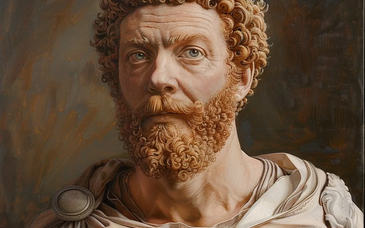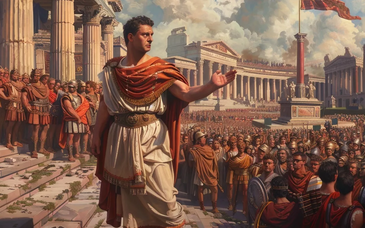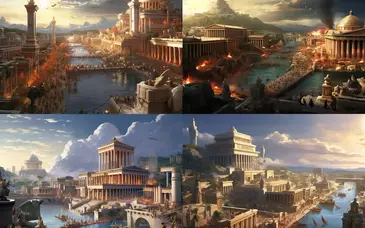Lectures
- The Geography of Italy
- The Etruscans
- The Roman Republic
- Roman Expansion and the Punic Wars
- The Civil War
- The Rise of Julius Casear
Instructional Goal: Students will know the major elements of the govenment of the Roman Republic and understand how these impacted the formation of the United States government.
I. The city-state of Rome becomes the leader in Italy.
- Coalition of Italian city-states took control of Italy after the fall of the Etruscans.
- Rome evolved as the leader of these city-states.
- Rome was built on the primary crossing of the Tiber river.
- The city was located on "seven hills" and surrounded by swamps which were unhealthy and unsanitary.
- A seaport, Ostia, was built to serve the city of Rome.
II. The origin of the Roman Republic.
- The Roman Republic was developed in reaction to the Italian's dislike for kings.
- A Republic defined is; A state in which the sovreign power is vested in representatives chosen by the people and responsible to them.
- The early Roman Republic contained two major social classes which were instrumental in the formation of the republic; (A) Patricians; members of the powerful, aristocratic landowning class. (B) Plebeians; members of a less powerful, middle-class.
III. Three bodies of citizens formed that helped Rome evolve into a full, democratic government over a period of two centuries.
- Senate; A group comprised of 300 patricians, elected for life who controlled foreign affairs, made laws and selected most government officials.
- Assembly of Centuries (Comitia Centuriata); A group of patricians who representated the military formations known as centuries (group of 100) and financed the military.
- Assembly of Tribes (Comitia Tributa); A group representating 35 plebeian tribes and based on geographic boundaries. It had no real power.
IV. Executive officers were chosen primarily from the Senate and Assembly of Centuries.
- Magistrates; The chief executive officials originally chosen by the patrician Senate.
- Consuls; The executive leaders of the republic, these two men were chosen from the ranks of the Magistrates for one-year terms. Their primary power was to act as co-commanders of the military.
- Praetor; Elected by the patricians, these men assumed all judicial functions.
- Censors; These officials registered all citizens for voting and taxation purposes. They eventually drew up the list for membership eligibility into the Senate and thus became very powerful.
- Dictator; An office, originated by the Senate, where all power was vested in one man in times of emergency. His term could not last more than six months.
V. Laws begin to be passed about 450 BC which extended power to the plebeian class.
- The Twelve Tables (450 BC); often called one of the first written constitutions, it protected the rights of the plebeian class.
- Tribunes were formed (444 BC) which were designed to protect the plebeians against unfair laws passed by the Senate. A Tribune would sit outside the Senate chamber and yell "Veto" if they attempted to pass a law against the interests of the plebeians.
- Licinian-Sexton laws (367 BC) limited the size of the estates held by Senators and reinforced the power of the Tribunes.
- Hortensian laws (287 BC); This law created the "Plebiscite" which allowed for laws to voted on the plebeians as well as made actions of the Comitia Tributa binding on all Roman citizens.
Assignment: Students will begin work on the study guide.





